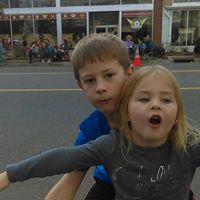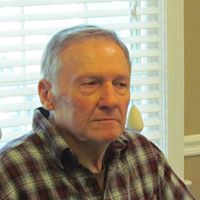Deborah D Lambert
age ~65
from Tracy, CA
- Also known as:
-
- Deborah Diane Lambert
- Deborah Diane Harper
- Deborah D Harper
- Debbie D Lambert
- Debra D Lambert
- Deborah D Lamberton
Deborah Lambert Phones & Addresses
- Tracy, CA
- Los Angeles, CA
- Union City, CA
- Henderson, NV
- Belmont, CA
- Fremont, CA
- San Joaquin, CA
Work
-
Company:Deborah Lambert
-
Address:11022 Se 18 St
-
Phones:(360)6192739
Specialities
Property Management
Isbn (Books And Publications)

Antique Collector's Directory of Period Detail: How to Identify the Kye Characteristics, Shapes, and Forms of Period Styles
view sourceAuthor
Deborah Lambert
ISBN #
0764151673

Helping Adolescents with Learning and Behavior Problems
view sourceAuthor
Deborah L. Lambert
ISBN #
0675205115
License Records
Deborah Lambert
License #:
RN24585 - Active
Category:
Nursing
Issued Date:
Sep 1, 1983
Expiration Date:
Mar 1, 2019
Type:
Registered Nurse
Real Estate Brokers

Deborah Lambert, Van WA
view sourceSpecialties:
Property Management
Work:
Deborah Lambert
11022 Se 18 St
(360)6192739 (Office)
11022 Se 18 St
(360)6192739 (Office)
Name / Title
Company / Classification
Phones & Addresses
Executive
Incite Studio
Eating Places
Eating Places
372 Orizaba Ave, Long Beach, CA 90814
DUTTON LAMBERT CONSULTING, LLC
Principal
Primitive Pets
Ret Misc Merchandise
Ret Misc Merchandise
2361 Mabury Rd, San Jose, CA 95133
Us Patents
-
Adjusting Alarms Based On Sleep Onset Latency
view source -
US Patent:20210345948, Nov 11, 2021
-
Filed:Jul 22, 2021
-
Appl. No.:17/382547
-
Inventors:- Cupertino CA, US
Wren N. Dougherty - San Francisco CA, US
Divya Nag - Palo Alto CA, US
Deborah M. Lambert - San Francisco CA, US
Stephanie Greer - San Francisco CA, US
Thomas R. Gruber - Santa Cruz CA, US -
Assignee:Apple Inc. - Cupertino CA
-
International Classification:A61B 5/00
H04W 4/70
G06Q 10/10
G08B 21/06
H04M 1/72451
H04L 29/08 -
Abstract:In some implementations, a mobile device can adjust an alarm siting based of the sleep onset latency duration detected for a user of the mobile device. For example, sleep onset latency can be the amount of time it takes for the user to fall asleep after the user attempts to go to sleep (e.g., goes to bed). The mobile device can determine when the user intends or attempts to go to sleep based on detected sleep ritual activities. Sleep ritual activities can include those activities user performs in preparation for sleep. The mobile device can determine when the user is asleep based on detected sleep signals (e.g., biometric data, sounds, etc.). In some implementations, the mobile device can determine recurring patterns of long or short sleep onset latency and present suggestions that might help the user sleep better or feel more rested.
-
Adjusting Alarms Based On Sleep Onset Latency
view source -
US Patent:20200345298, Nov 5, 2020
-
Filed:Jul 21, 2020
-
Appl. No.:16/934983
-
Inventors:- Cupertino CA, US
Wren N. Dougherty - San Francisco CA, US
Divya Nag - Palo Alto CA, US
Deborah M. Lambert - San Francisco CA, US
Stephanie Greer - San Francisco CA, US
Thomas R. Gruber - Santa Cruz CA, US -
Assignee:Apple Inc. - Cupertino CA
-
International Classification:A61B 5/00
H04W 4/70
G06Q 10/10
G08B 21/06
H04L 29/08
H04M 1/725 -
Abstract:In some implementations, a mobile device can adjust an alarm setting based on the sleep onset latency duration detected for a user of the mobile device. For example, sleep onset latency can be the amount of time it takes for the user to fall asleep after the user attempts to go to sleep (e.g., goes to bed). The mobile device can determine when the user intends or attempts to go to sleep based on detected sleep ritual activities. Sleep ritual activities can include those activities a user performs in preparation for sleep. The mobile device can determine when the user is asleep based on detected sleep signals (e.g., biometric data, sounds, etc.). In some implementations, the mobile device can determine recurring patterns of long or short sleep onset latency and present suggestions that might help the user sleep better or feel more rested.
-
Facilitating Restful Sleep Using Reminders
view source -
US Patent:20190213060, Jul 11, 2019
-
Filed:Mar 14, 2019
-
Appl. No.:16/353784
-
Inventors:- Cupertino CA, US
Wren N. Dougherty - San Francisco CA, US
Divya Nag - Palo Alto CA, US
Deborah M. Lambert - San Francisco CA, US
Stephanie M. Greer - San Francisco CA, US
Thomas R. Gruber - Santa Cruz CA, US -
Assignee:Apple Inc. - Cupertino CA
-
International Classification:G06F 9/54
G06F 3/01
G08B 5/22 -
Abstract:In some implementations, a computing device may detect that a user of the computing device intends to sleep. The computing device may cause a reminder notification to be presented on a display of the computing device that prompts the user to prepare one or more secondary devices for sleep. The computing device may obtain, for each of the one or more secondary devices, a desired state for sleep specified by the user. The computing device may cause, for each of the one or more secondary devices, a current state to change to the desired state for sleep. In some implementations, the user activities may be detected by receiving sensor data from one or more sensor devices of the computing device and identifying the user activities based on the received sensor data. In some implementations, the computing device may automatically change the current state to the desired state for sleep.
-
Adjusting Alarms Based On Sleep Onset Latency
view source -
US Patent:20180317839, Nov 8, 2018
-
Filed:Jul 18, 2018
-
Appl. No.:16/038623
-
Inventors:- Cupertino CA, US
Wren N. Dougherty - San Francisco CA, US
Divya Nag - Palo Alto CA, US
Deborah M. Lambert - San Francisco CA, US
Stephanie Greer - San Francisco CA, US
Thomas R. Gruber - Santa Cruz CA, US -
Assignee:Apple Inc. - Cupertino CA
-
International Classification:A61B 5/00
G08B 21/06
G06Q 10/10
H04M 1/725
H04L 29/08
H04W 4/70 -
Abstract:In some implementations, a mobile device can adjust an alarm setting based on the sleep onset latency duration detected for a user of the mobile device. For example, sleep onset latency can be the amount of time it takes for the user to fall asleep after the user attempts to go to sleep (e.g., goes to bed). The mobile device can determine when the user intends or attempts to go to sleep based on detected sleep ritual activities. Sleep ritual activities can include those activities a user performs in preparation for sleep. The mobile device can determine when the user is asleep based on detected sleep signals (e.g., biometric data, sounds, etc.). In some implementations, the mobile device can determine recurring patterns of long or short sleep onset latency and present suggestions that might help the user sleep better or feel more rested.
-
Adjusting Alarms Based On Sleep Onset Latency
view source -
US Patent:20180042547, Feb 15, 2018
-
Filed:Oct 24, 2017
-
Appl. No.:15/792678
-
Inventors:- Cupertino CA, US
Wren N. Dougherty - San Francisco CA, US
Divya Nag - Palo Alto CA, US
Deborah M. Lambert - San Francisco CA, US
Stephanie Greer - San Francisco CA, US
Thomas R. Gruber - Santa Cruz CA, US -
International Classification:A61B 5/00
H04L 29/08
G06Q 10/10
G08B 21/06
H04W 4/00
H04M 1/725 -
Abstract:In some implementations, a mobile device can adjust an alarm setting based on the sleep onset latency duration detected for a user of the mobile device. For example, sleep onset latency can be the amount of time it takes for the user to fall asleep after the user attempts to go to sleep (e.g., goes to bed). The mobile device can determine when the user intends or attempts to go to sleep based on detected sleep ritual activities. Sleep ritual activities can include those activities a user performs in preparation for sleep. The mobile device can determine when the user is asleep based on detected sleep signals (e.g., biometric data, sounds, etc.). In some implementations, the mobile device can determine recurring patterns of long or short sleep onset latency and present suggestions that might help the user sleep better or feel more rested.
-
Adjusting Alarms Based On Sleep Onset Latency
view source -
US Patent:20170238864, Aug 24, 2017
-
Filed:May 9, 2017
-
Appl. No.:15/590805
-
Inventors:- Cupertino CA, US
Wren N. Dougherty - San Francisco CA, US
Divya Nag - Palo Alto CA, US
Deborah M. Lambert - San Francisco CA, US
Stephanie Greer - San Francisco CA, US
Thomas R. Gruber - Santa Cruz CA, US -
International Classification:A61B 5/00
H04W 4/00
H04L 29/08
H04M 1/725
G06Q 10/10
G08B 21/06 -
Abstract:In some implementations, a mobile device can adjust an alarm setting based on the sleep onset latency duration detected for a user of the mobile device. For example, sleep onset latency can be the amount of time it takes for the user to fall asleep after the user attempts to go to sleep (e.g., goes to bed). The mobile device can determine when the user intends or attempts to go to sleep based on detected sleep ritual activities. Sleep ritual activities can include those activities a user performs in preparation for sleep. The mobile device can determine when the user is asleep based on detected sleep signals (e.g., biometric data, sounds, etc.). In some implementations, the mobile device can determine recurring patterns of long or short sleep onset latency and present suggestions that might help the user sleep better or feel more rested.
-
Facilitating Restful Sleep Using Reminders
view source -
US Patent:20170086731, Mar 30, 2017
-
Filed:Sep 30, 2015
-
Appl. No.:14/871875
-
Inventors:- Cupertino CA, US
Wren N. Dougherty - Cupertino CA, US
Divya Nag - Cupertino CA, US
Deborah M. Lambert - Cupertino CA, US
Stephanie Greer - Cupertino CA, US
Thomas R. Gruber - Cupertino CA, US -
International Classification:A61B 5/00
A61B 5/11
G01L 5/00
A61B 5/01
A61B 5/08
A61B 7/00
A61B 5/024 -
Abstract:In some implementations, a computing device can remind a user to perform sleep ritual activities. The computing device can automatically determine the user's sleep ritual. The users sleep ritual can include various activities performed before going to sleep. The computing device can detect when the user performs the various sleep ritual activities. The computing device can remind the user about specific sleep ritual activities when the user forgets to perform the sleep ritual activities before going to sleep. In some implementation, the computing device can perform sleep ritual activities (e.g., turning off devices, locking doors, setting the air conditioning, etc.) on behalf of the user in response to user input. In some implementation, the computing device can perform sleep ritual activities on behalf of the user automatically and without user input.
-
Confirming Sleep Based On Secondary Indicia Of User Activity
view source -
US Patent:20170086732, Mar 30, 2017
-
Filed:Sep 30, 2015
-
Appl. No.:14/871887
-
Inventors:- Cupertino CA, US
Roy J. Raymann - Cupertino CA, US
Wren N. Dougherty - Cupertino CA, US
Divya Nag - Cupertino CA, US
Deborah M. Lambert - Cupertino CA, US
Stephanie Greer - Cupertino, US
Thomas R. Gruber - Cupertino CA, US -
International Classification:A61B 5/00
A61B 5/11 -
Abstract:In some implementations, a computing device can confirm a sleep determination for a user based on secondary indicia of user activity. For example, the computing device can be a user's primary computing device. The primary device can predict and/or determine when the user is sleeping based on the user's use (e.g., primary indicia), or lack of use, of the primary device. After the primary device determines that the user is sleeping, the primary device can confirm that the user is asleep based on secondary indicia of user activity. In some implementations, the secondary indicia can include user activity reported to the primary computing device by other secondary computing devices (e.g., a second user device, a household appliance, etc.). In some implementations, the secondary indicia can include user activity detected by sensors of the primary computing device (e.g., sound, light, movement, etc.).
Resumes

Deborah Lambert
view source
Deborah Lambert
view source
Deborah Lambert
view source
Deborah Lambert
view source
Deborah Lambert
view sourceSkills:
Microsoft Word
Microsoft Excel
Customer Service
Powerpoint
Microsoft Office
Windows
English
Research
Microsoft Excel
Customer Service
Powerpoint
Microsoft Office
Windows
English
Research

Director Of Student Assustance
view sourceWork:
Director of Student Assustance

Deborah Lambert
view source
Deborah Lambert
view sourceLocation:
United States
Plaxo

Deborah Lambert
view sourceVoorheesville, NYCore Designer I at Atlas Copco Past: Mechanical Designer at QuEST Global
Youtube
Flickr

Deborah Hopkins Lambert
view source
Deborah Harrison Lambert
view source
Deborah Catoe Lambert
view source
Deborah Lambert Jennings
view source
Deborah Lambert Woods
view source
Deborah Lambert Roudebush
view source
Deborah Embry Lambert
view source
Deborah Wiley Lambert
view sourceClassmates

Deborah Burlingame (Lamb...
view sourceSchools:
Lee Elementary School Portland OR 1968-1977
Community:
Martin Gredvig, Patricia Patty, Stewart Patey, Christine Teel
Biography:
Life comes at you fast just like the commercial says! Glen and I are celebrating 6 ...

Deborah Burkhart (Lambert)
view sourceSchools:
Clarenceville High School Livonia MI 1967-1971
Community:
Ray Smith, Mary Flores

Deborah Lambert (Jones)
view sourceSchools:
Satsuma High School Satsuma AL 1963-1967
Community:
Kevin Jordan, Mike Holderfield

Deborah Lambert
view sourceSchools:
L'Anse High School L'anse MI 1981-1985
Community:
Paul Erickson

Deborah Lambert
view sourceSchools:
Monroeville High School Monroeville OH 1969-1973
Community:
Gale Gardner, Beth Diringer, Rocky Hamilton, Katharine Parsons

Deborah Lambert
view sourceSchools:
Owens Special School Charleston WV 1957-1964, Horace Mann Middle School Charleston WV 1964-1967, Fairfax Hall High School Waynesboro VA 1967-1970
Community:
Sharon Peterman, Angela Lucas, Linda Larkins

Deborah Lambert
view sourceSchools:
Birmingham High School Birmingham MI 1972-1976
Community:
Janet Webb, Gordon Fox, Ward Tollzien

Deborah Lambert
view sourceSchools:
Perry High School Massillon OH 1985-1989
Community:
Randall Miller, Debbie Jeffears
Get Report for Deborah D Lambert from Tracy, CA, age ~65













